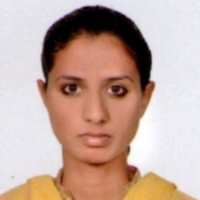International Journal of Intelligent Systems and Applications (IJISA)
IJISA Vol. 6, No. 8, 8 Jul. 2014
Cover page and Table of Contents: PDF (size: 396KB)
Approximate Reasoning through Multigranular Approximate Rough Equalities
Full Text (PDF, 396KB), PP.69-76
Views: 0 Downloads: 0
Author(s)
Index Terms
Rough Set, Approximate Equalities, Optimistic Multigranulations, Pessimistic Multigranulations, Bottom R-Equal, Top R-Equal, R-Equal, Approximate R-Equal
Abstract
The notion of rough set was introduced by Pawlak as an uncertainty based model, which basically depends upon single equivalence relations defined over a universe or a set of equivalence relations, which are not considered simultaneously. Hence, from the granular computing point of view it is unigranular by nature. Qian et al in 2006 and in 2010 introduced two types of multigranular rough sets (MGRS) called the optimistic and pessimistic MGRS respectively. The stringent notion of mathematical equality of sets was extended by introducing a kind of approximate equality, called rough equality by Novotny and Pawlak, which uses basic rough sets. Later three more related types of such approximate equalities have been introduced by Tripathy et al. He has also provided a comparative analysis of these four types of approximate equalities of sets leading to approximate reasoning in real life situations. Two of these four types of approximate equalities; namely the rough equality and rough equivalence have been extended to the context of multigranulations by Tripathy et al very recently. In this paper we carry out this study further by introducing the notion of approximate rough equalities for multigranulations and establish their properties. We use a real life example to illustrate the results in the paper and also to construct examples in support of some parts of the properties.
Cite This Paper
B. K. Tripathy, Rashmi Rawat, Divya Vani .Y, Sudam Charan Parida, "Approximate Reasoning through Multigranular Approximate Rough Equalities", International Journal of Intelligent Systems and Applications(IJISA), vol.6, no.8, pp.69-76, 2014. DOI:10.5815/ijisa.2014.08.08
Reference
[1]Zadeh, L.A.: Fuzzy Sets, Information and control, vol.8, no.3, (1965), pp.338 – 353
[2]Pawlak, Z.: Rough Sets, International Journal of Information and Computer Science, (1982), pp.341-346.
[3]Pawlak, Z.: Rough Sets, Theoretical Aspects of Reasoning about Data, Kluwer Academic Publishers, (1991).
[4]Qian, Y.H and Liang, J.Y.: Rough set method based on Multi-granulations, Proceedings of the 5th IEEE Conference on Cognitive Informatics, vol.1, (2006),pp.297 – 304.
[5]Qian, Y.H., Liang, J.Y and Dang, C.Y.: Pessimistic rough decision, in: Proceedings of RST 2010, Zhoushan, China, (2010), pp. 440-449.
[6]Tripathy, B.K. and Nagaraju, M.: A Comparative Analysis of Multigranular Approaches and on Topological Properties of Incomplete Pessimistic Multigranular Rough Fuzzy Sets, International Journal of Intelligent Systems and Applications, vol.11, (2012), pp.99-109.
[7]Tripathy, B.K. and Raghavan, R.: Some Algebraic properties of Multigranulations and an Analysis of Multigranular Approximations of Classifications, International Journal of Information Technology and Computer Science,vol.7, (2013),pp.63-70.
[8]Tripathy, B.K. and Raghavan, R.: On Some Comparison Properties of Rough Sets Based on Multigranulations and Types of Multigranular Approximations of Classifications, I.J. Intelligent Systems and Applications, (2013), 06, pp.70-77.
[9]Novotny, M. and Pawlak, Z.: Characterization of Rough Top equalities and Rough Bottom Equalities”, Bull. Polish Acad. Sci. Math., 33, (1985), pp.91-97.
[10]Novotny, M. and Pawlak, Z.: On Rough Equalities, Bull. Polish Acad. Sci. Math., 33, (1985), pp.99-104.
[11]Novotny, M. and Pawlak, Z.: Black Box Analysis and Rough Top Equality”, Bull. Polish Acad. Sci. Math., 33, (1985), pp.105-113.
[12]Tripathy, B.K.: On Approximation of classifications, rough equalities and rough equivalences, Studies in Computational Intelligence, vol.174, Rough Set Theory: A True Landmark in Data Analysis, Springer Verlag, (2009), pp.85 - 136
[13]Tripathy, B.K., Mitra, A. and Ojha, J.: On Rough Equalities and Rough Equivalences of Sets, SCTC 2008-Akron, U.S.A., Springer-Verlag Berlin Heidelberg (2008), LNAI 5306, pp.92–102.
[14]Tripathy, B.K. and Mitra, A.: On the approximate equalities of multigranular rough sets and approximate reasoning, Proceedings, 4th IEEE International Conference on Computing, Communication and Networking Technologies (ICCCNT 2013), 4-6 July (2013).
[15]Tripathy, B.K. :An Analysis of Approximate Equalities based on Rough Set Theory, International Journal of Advanced Science and Technology vol. 31, June, (2011), pp.23-36.
[16]Tripathy, B.K., Mitra, A. and Ojha, J.: Rough Equivalence and Algebraic properties of Rough Sets, International Journal of Artificial Intelligence and Soft Computing, (Switzerland), vol.1, nos.2/3/4, (2009), pp.271 – 289.
[17]Tripathy, B.K. and Mitra, A.: On Approximate Equivalences of Multigranular Rough Sets and Approximate Reasoning, International .Journal of Information Technology and Computer Science, 10, (2013), pp.103-113
[18]Tripathy, B.K. and Mitra, A.: Algebric Properties of Rough Sets using topological characterisations and Approximate Equalities, IEEE International Conference on Computational Intelligence and Computing Research, (2013), 978-1-4799-1597-2/13.



